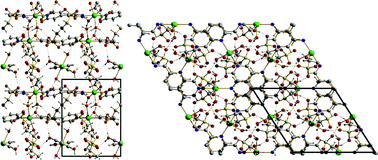Two cationic metal–organic frameworks based on cadmium and α,ω-alkanedisulfonate anions and their photoluminescent properties†
Abstract
We have successfully synthesized three

* Corresponding authors
a
University of California, Santa Cruz, Department of Chemistry, 1156 High Street, Santa Cruz, CA, USA
E-mail:
soliver@chemistry.ucsc.edu
Fax: +1 831 459 2935
Tel: +1 831 459 5448
We have successfully synthesized three

 Please wait while we load your content...
Something went wrong. Try again?
Please wait while we load your content...
Something went wrong. Try again?
H. Fei and S. R. J. Oliver, Dalton Trans., 2010, 39, 11193 DOI: 10.1039/C0DT01064B
To request permission to reproduce material from this article, please go to the Copyright Clearance Center request page.
If you are an author contributing to an RSC publication, you do not need to request permission provided correct acknowledgement is given.
If you are the author of this article, you do not need to request permission to reproduce figures and diagrams provided correct acknowledgement is given. If you want to reproduce the whole article in a third-party publication (excluding your thesis/dissertation for which permission is not required) please go to the Copyright Clearance Center request page.
Read more about how to correctly acknowledge RSC content.
 Fetching data from CrossRef.
Fetching data from CrossRef.
This may take some time to load.
Loading related content
